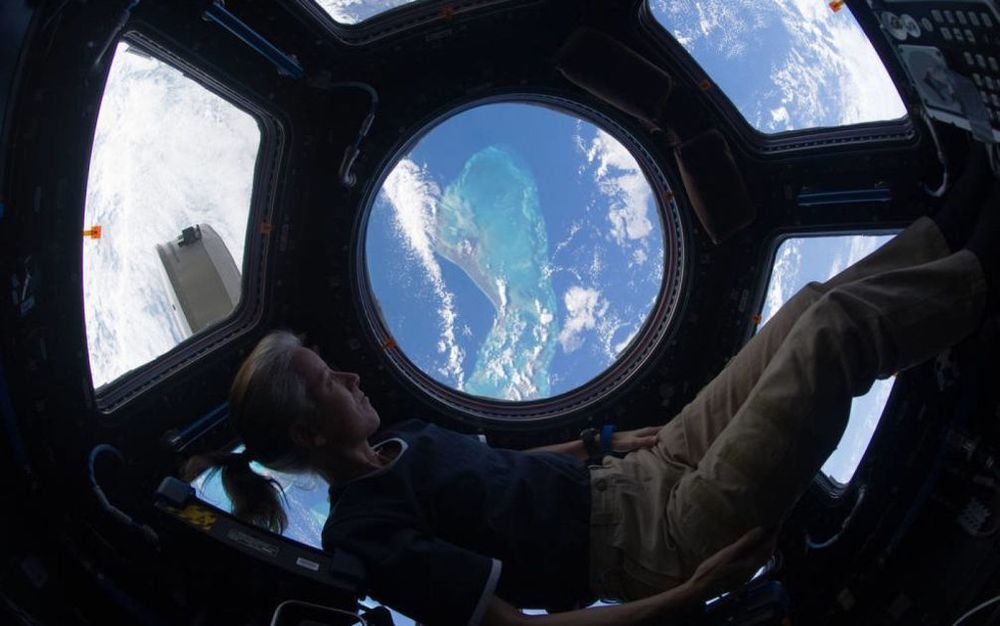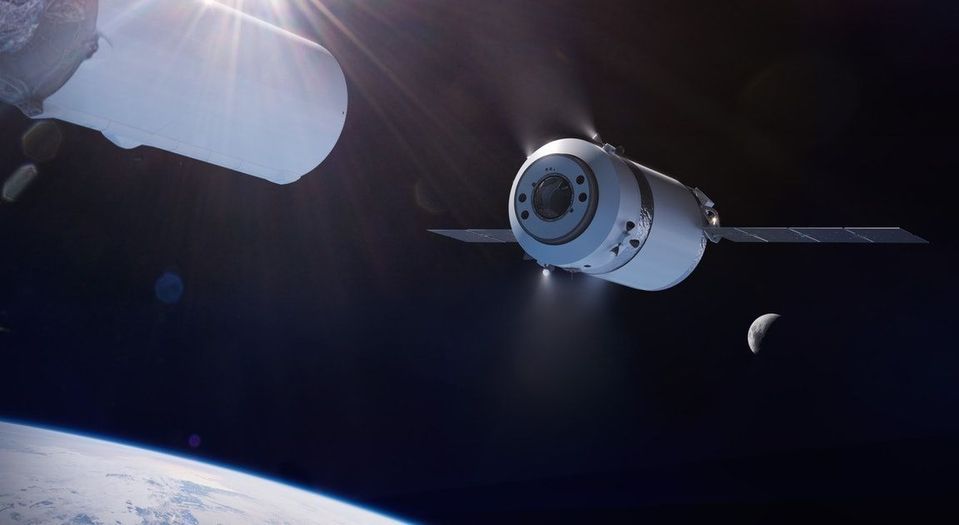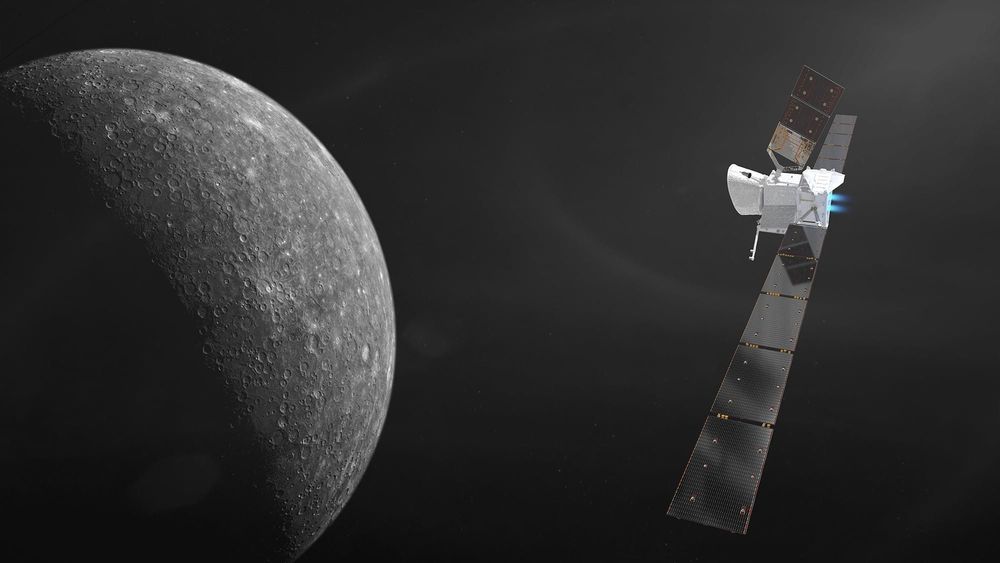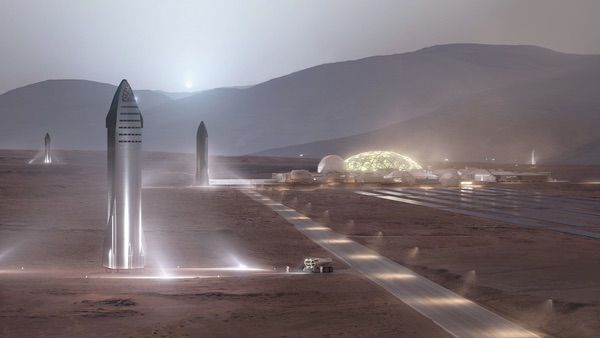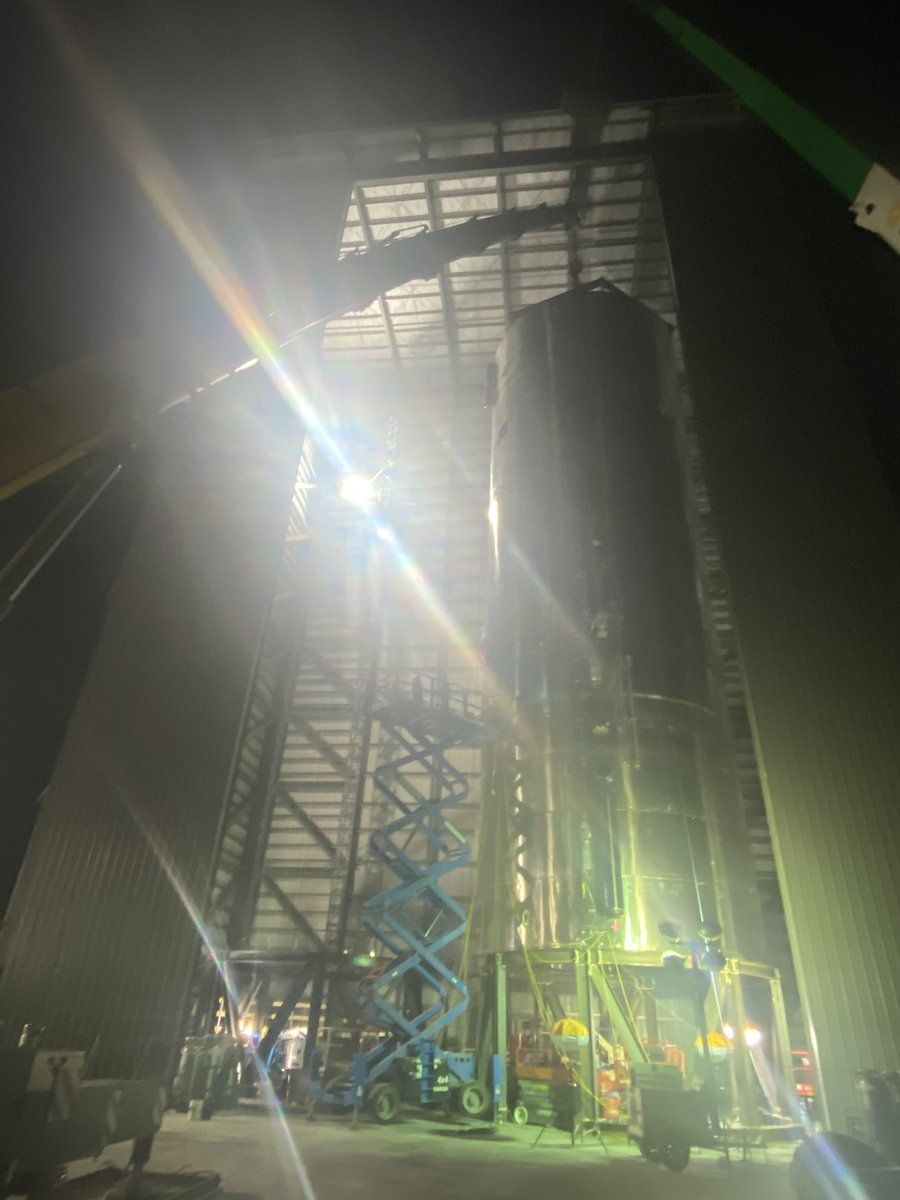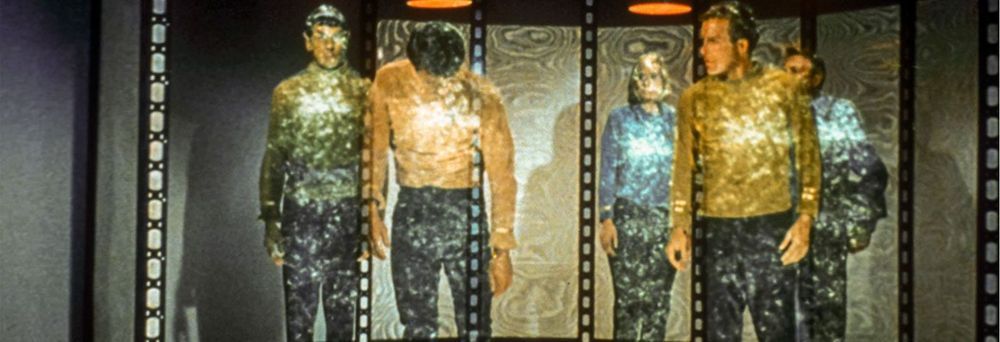Two more astronauts have been assigned to the first operational crewed flight of SpaceX’s Crew Dragon on a mission to the International Space Station (ISS). NASA astronaut Shannon Walker and Noguchi Soichi, of the Japanese Aerospace Exploration Agency (JAXA), will join NASA astronauts Michael Hopkins and Victor Glover Jr., who were assigned to the mission in 2018. If all goes according to plan, this will be the first in a series of regular Crew Dragon flights to the ISS, NASA said in a press release.
Category: space travel – Page 321
European Space Agency (ESA) flight engineers are going to social distance at work in order to fine-tune the BepiColombo spacecraft’s trajectory to the planet Mercury.
Some people have claimed that a “business case” for profitable interplanetary trade with a Mars settlement, or at least the identification a saleable product for trade, is required before such a settlement can be established or supported by business or government. But there is no reasonable prospect for trade in any significant mass of physical material from a Mars settlement back to Earth in the near future due to the high transport costs. In his recent article in the National Review, “Elon Musk’s Plan to Settle Mars,” Robert Zubrin makes exactly the same point: a business case based on physical trade is not necessary and makes little sense. Later trade and commerce via non-physical goods such as software is probable once a settlement is fully operational. More significant and interesting economic situations will occur on Mars.
A good model for the expenditures needed to found colonies is the Greek and Phoenician expansion all across the Mediterranean and Black Sea areas in the period early in Greek history (before about 600 BC), leading to the founding of one of the greatest trading cities in history, Carthage. The cities who founded each colony did not expect immediate profit, but wanted good places for an expanding population and knew that, once the new cities were established, trade would also become established. Most of the cost was probably in building more ships. When European colonies were first established in the New World by Spain and Portugal, the emphasis was initially on a search for treasure, not production of products. English and Dutch colonies later led the way to commerce across the Atlantic, with tobacco, sugar, and cotton suddenly becoming a major part of world trade.
A look at some of the steps required to create a Mars settlement will help us understand at least a little about Mars settlement economics. For a Mars settlement, motivation and economics are interwoven. It is possible for at least a partial business case to be made for the transport of settlers and the materials they will need to initiate some phase of Mars settlement. This includes the current effort to create a large number of reliable, low cost, and reusable super-heavy boosters and spacecraft, able to take payloads of 100 tons or more of cargo and passengers to Mars and land them at the right location. Part of this development and construction cost will be defrayed by commercial and government uses of the same vehicles, such as placing very heavy payloads in LEO and taking equipment and passengers to and around the Moon.
By Bill D’Zio, Originally posted on www.westeastspace.com March 28, 2020
NASA may have sidelined the Lunar Gateway for a return mission to the Moon, but it is not stopping the momentum. NASA has awarded several contracts for the Lunar Gateway including the most recent one to SpaceX. This demonstrates the growing capabilities of New Space companies to capture contracts and complete missions.
“This contract award is another critical piece of our plan to return to the Moon sustainably. The Gateway is the cornerstone of the long-term Artemis architecture and this deep space commercial cargo capability integrates yet another American industry partner into our plans for human exploration at the Moon in preparation for a future mission to Mars.”
NASA Administrator Jim Bridenstine in a press release statement about the award to SpaceX.
During this extremely rare epoch of non-travel, it’s worth looking back at Magellan and the Age of Discovery. Exploration and freedom of movement have always come with a price.
The latest test version of the Mars-colonizing Starship spacecraft, called the SN3, has been stacked at SpaceX’s South Texas facilities, new photos tweeted out by company founder and CEO Elon Musk show.
In 2005, the obituary of physicist Asher Peres in the magazine Physics Today told us that when a journalist asked him if quantum teleportation could transport a person’s soul as well as their body, the scientist replied: “No, not the body, just the soul.” More than just a simple joke, Peres’ response offers a perfect explanation, encoded in a metaphor, of the reality of a process that we have seen countless times in science fiction. In fact, teleportation does exist, although in the real world it is quite different from the famous “Beam me up, Scotty!” associated with the Star Trek series.
Teleportation in real science began to take shape in 1993 thanks to a theoretical study published by Peres and five other researchers in Physical Review Letters, which laid the foundation for quantum teleportation. Apparently, it was co-author Charles Bennett’s idea to associate the proposed phenomenon with the popular idea of teleportation, but there is an essential difference between fiction and reality: in the latter it’s not matter that travels, but rather information, which transfers properties from the original matter to that of the destination matter.
Quantum teleportation is based on a hypothesis described in 1935 by physicist Albert Einstein and his colleagues Boris Podolsky and Nathan Rosen, known as the EPR paradox. As a consequence of the laws of quantum physics, it was possible to obtain two particles and separate them in space so that they would continue to share their properties, as two halves of a whole. Thus, an action on one of them (on A, or Alice, according to the nomenclature used) would instantaneously have an effect on the other (on B, or Bob). This “spooky action at a distance”, in Einstein’s words, would seem capable of violating the limit of the speed of light.
Because running Tesla and SpaceX and building a new Starship every 72 hours so he can colonize Mars isn’t enough, now Elon Musk would really love to build an efficient and quiet HVAC system for home use, according to Inverse. It could even piggyback the existing work Tesla has done to make heaters for its newest vehicle, the Model Y.
The first few Tesla vehicles used an electric cabin heater to replace a traditional fuel vehicle’s reliance on internal combustion engine heat. Trying to find the right kind of heater has been challenging at times for Tesla, which was faced with reinventing the wheel, so to speak. Before now, engines made the heat as a secondary effect of combustion.
By Bill D’Zio Originally published on www.westeastspace.com
Parachutes are plaguing space programs. SpaceX doesn’t like Parachutes. They are difficult to design, hard to package, and easy to damage. The larger the mass of the spacecraft, the more effort to slow down. Larger, more efficient, complex parachute systems are needed. Several failures have hit the industry over the last few years, including SpaceX Crew Dragon, ESA ExoMars, Boeing CST-100, and the NASA Orion to name a few.
